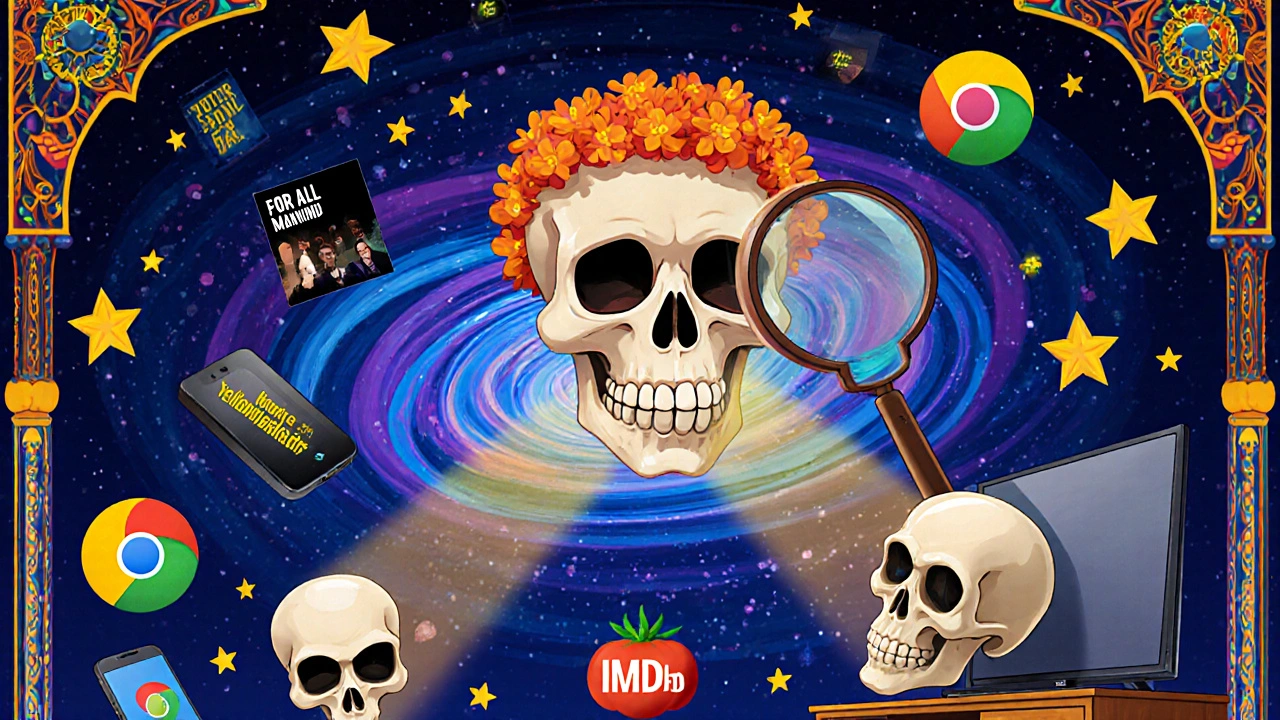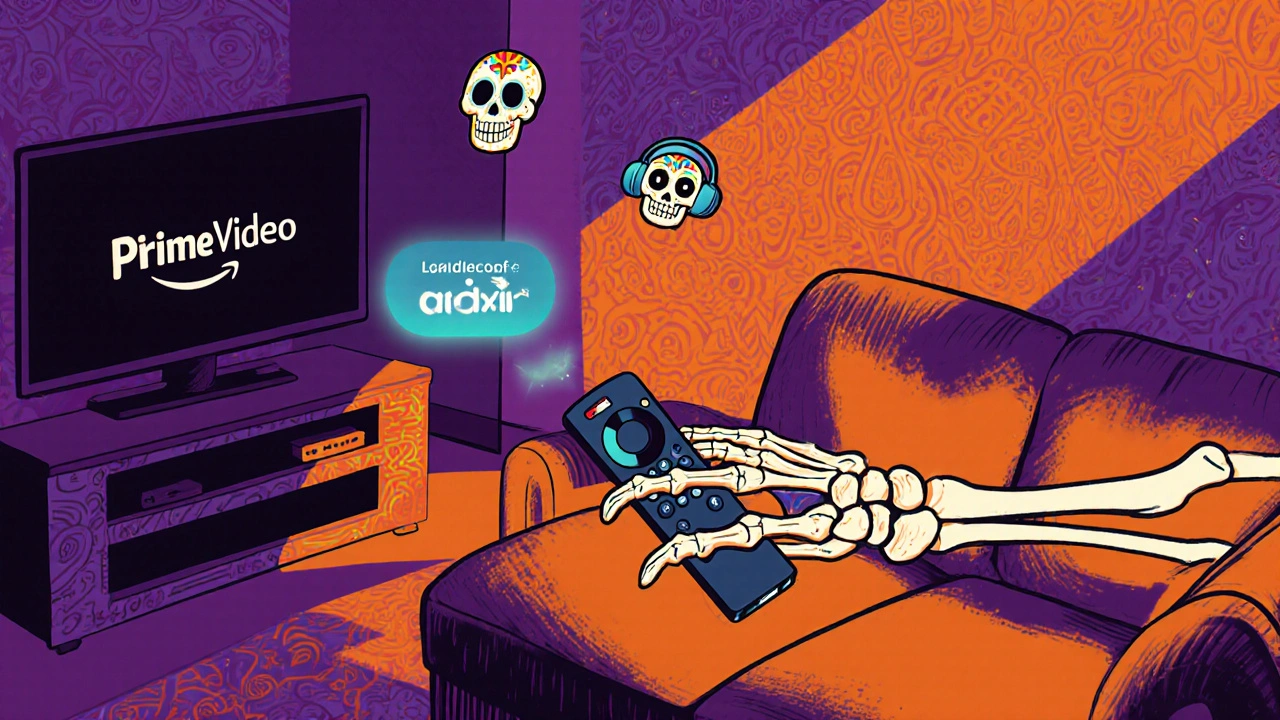Imagine this: you’re curled up on the couch, halfway through your favorite show, and the remote vanishes under the cushions again. You don’t want to get up. You don’t want to fumble for buttons. You just say, "Play The Crown on Netflix," and it happens. That’s the power of voice control on streaming devices - and it’s not magic. It’s Alexa, Google Assistant, and Roku working together to make your TV smarter.
What Voice Control Actually Does on Streaming Devices
Voice control isn’t just about turning the TV on or off. On modern streaming devices, it lets you search for shows, launch apps, adjust volume, skip ads (on supported services), even control your smart home lights while you binge. It’s the remote you never have to find.
But not all voice systems are built the same. Alexa, Google Assistant, and Roku’s own voice engine each handle tasks differently. Some are faster. Some understand accents better. Some know more about your favorite shows. If you’re choosing a device, you’re really choosing a voice assistant - and that choice changes how you watch TV.
Alexa on Fire TV and Other Devices
Amazon’s Alexa is everywhere. If you’ve got a Fire TV Stick, Fire TV Cube, or even a smart TV with Alexa built-in, you’re already using it. Alexa works best when you’re deep in Amazon’s ecosystem - Prime Video, Audible, Amazon Music.
You can say, "Alexa, play The Boys on Prime Video," and it launches right away. It also knows your watch history. If you say, "Continue watching," it picks up exactly where you left off - even if you switched devices.
Alexa also controls other smart devices. Say "Alexa, turn off the lights," and your living room dims while the next episode starts. It’s seamless if you’ve got Echo speakers, smart bulbs, or a thermostat from Amazon’s partners.
But Alexa has blind spots. Ask it to find a show on Hulu or Disney+, and it might struggle. It doesn’t always understand regional slang or non-American accents well. I’ve had it mishear "Bridgerton" as "Bridgeton" - twice. And if you’re outside the U.S., some commands just don’t work.
Google Assistant: The Search King
Google Assistant is the best at finding things. If you’re the type who says, "Find that documentary about deep-sea squid," Google’s your guy. It pulls from thousands of sources - IMDb, Rotten Tomatoes, streaming services, even news articles.
On Chromecast with Google TV, Android TV boxes, or Nest Hub Max, Google Assistant understands context. Ask, "What’s the name of the actor from that show about space colonists?" and it’ll recognize you’re talking about For All Mankind - even if you don’t say the title. Then it’ll tell you the actor’s name and where else you can see their work.
It also works across devices. Start watching on your phone, say "Hey Google, cast to TV," and it moves the stream without you lifting a finger. It’s the most intelligent voice system for discovery.
But Google isn’t perfect. It’s slower to launch apps than Alexa. Sometimes it takes 3-5 seconds to respond. And if you’re not using YouTube TV or Netflix (which Google owns), it doesn’t always know your preferences. I tried asking it to "play the latest episode of Yellowjackets," and it opened YouTube instead. Had to repeat it with "on Showtime."

Roku’s Voice Remote: Simple, Fast, Local
Roku doesn’t use Alexa or Google. It built its own voice engine - and it’s surprisingly good. The Roku Voice Remote (sold with most Roku devices) has a dedicated button. Press it, speak, and it works.
Roku’s strength? Speed. It launches apps faster than Alexa or Google. Ask for "Hulu," and it’s open in under a second. Ask for "Play Stranger Things," and it finds it across all your subscribed services - Netflix, Hulu, Peacock - and picks the one you watch most.
It also handles local commands well. In New Zealand, I’ve asked it "What’s on TV tonight?" and it listed free-to-air channels and streaming options. It understands Kiwi slang better than Alexa. "Find that show with the cops in Dunedin" - it knew I meant Stingers.
Roku’s voice doesn’t control your smart home. No lights, no thermostats. But it doesn’t need to. It’s focused on one thing: helping you watch TV. No distractions. No bloat. And it works with every streaming service - even the obscure ones like BritBox or SBS On Demand.
Which One Should You Choose?
Here’s the real question: what do you want your voice to do?
- If you’re all-in on Amazon - Prime Video, Echo speakers, smart home gadgets - go with Alexa. It’s the most integrated.
- If you love searching, discovering new shows, and switching between devices, pick Google Assistant. It’s the smartest for finding content.
- If you want speed, simplicity, and support for every streaming app (even international ones), choose Roku. It’s the most reliable for pure TV watching.
Most people don’t realize that the device you buy isn’t just about the screen - it’s about the voice behind it. You’ll use it dozens of times a day. If it misunderstands you, you’ll get frustrated. If it’s fast and accurate, you’ll forget you ever used a remote.

Common Mistakes People Make
Here’s what goes wrong - and how to fix it.
- Speaking too fast. Voice systems need pauses. Say "Play Stranger Things on Netflix" clearly. Don’t rush it.
- Assuming it knows your account. If you have multiple Netflix profiles, say "Play on Mom’s profile" - otherwise, it picks the default.
- Using the wrong remote. If you have a Roku device but use an Alexa remote, you’re stuck with Alexa’s limits. The voice engine is tied to the device, not the speaker.
- Ignoring updates. Roku and Google update their voice models every few months. Check for firmware updates - they improve accuracy.
Also, don’t expect perfection. Voice control still mishears. But it’s gotten way better. In 2023, Amazon reported a 40% drop in voice command errors compared to 2021. Google’s accuracy for non-native English speakers jumped 35% last year. Roku’s engine now handles 12 different accents better than it did two years ago.
What’s Next for Voice on Streaming Devices?
The future isn’t just voice. It’s context-aware AI.
Imagine saying, "I’m in the mood for something funny," and your device knows you watched three dramas last week, skipped the comedy section before, and loved Ted Lasso. It doesn’t just play a show - it curates a list for you.
Google’s already testing this. Roku’s working on voice-based recommendations based on your watch time. Amazon’s experimenting with tone detection - if you sound tired, it suggests lighter shows.
By 2026, your voice won’t just control your TV. It’ll understand your mood, your habits, your tiredness. And it’ll get better the longer you use it.
Frequently Asked Questions
Can I use Alexa to control my Roku device?
Yes, but only if you set it up through the Alexa app. You can link your Roku account to Alexa and use voice commands like "Alexa, turn on Roku" or "Alexa, open Netflix on Roku." But you lose Roku’s native speed and app discovery. It’s possible, but not ideal.
Do I need a smart speaker to use voice control?
No. All major streaming devices - Fire TV, Chromecast with Google TV, Roku - come with remotes that have built-in microphones. You don’t need an Echo, Nest, or Google Home. The remote is your voice controller.
Which voice system works best for international streaming services?
Roku wins here. It supports over 50 streaming services globally, including SBS On Demand (Australia), BritBox (UK), and TVNZ (New Zealand). Alexa and Google Assistant often struggle with non-U.S. services. If you watch a lot of international content, Roku’s voice engine is the most reliable.
Can I use voice control to skip ads?
Only on services that allow it. On Netflix, you can’t skip ads - but if you’re on Hulu or Peacock, you can say "Skip ad" and it will. Not all platforms support this, and it depends on your subscription tier. Free tiers usually don’t let you skip.
Why does my voice control sometimes not work?
Three common reasons: background noise (TV volume too loud), poor mic placement (remote too far from you), or outdated software. Try lowering the TV volume, moving closer to the device, and checking for firmware updates. If it still fails, restart the device - it’s often a temporary glitch.


